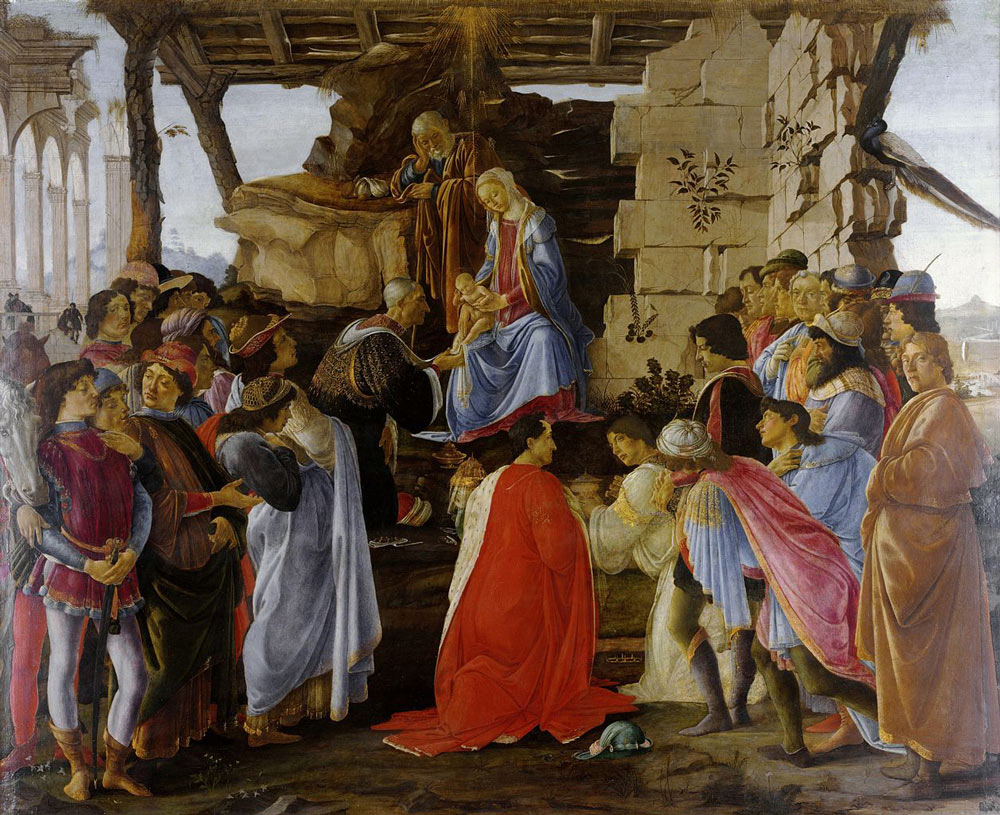| Adoration of the Magi | |
|---|---|
 |
|
| Artist | Sandro Botticelli |
| Year | c. 1475-1476 |
| Medium | Tempera on panel |
| Location | Uffizi of Florence, Italy |
| Dimensions | 44 in × 53 in |
| 111 cm × 134 cm | |
| Famous Paintings by Botticelli | |
| Fortitude | |
| Adoration of the Magi | |
| The Birth of Venus | |
| Primavera | |
| Cestello Annunciation | |
| Saint Augustine | |
| Venus and Mars | |
| The Mystical Nativity | |
| Temptations of Christ | |
| Complete Works |
The Adoration of the Magi is Sandro Botticelli’s depiction of a famous scene, where the three Magi, or kings, bring gifts of gold, frankincense, and myrrh to lay before a baby Jesus. This was a popular theme among Renaissance painters, and Botticelli’s version dates back to around 1475.
History
This painting by Botticelli was commissioned by an Italian banker, Gaspare di Zanobi del Lama. He wanted the painting for a chapel located in Florence. The chapel where the Adoration of the Magi once rested is now destroyed, and the painting is now in the Uffizi, a famous art museum in Florence.
Analysis
In Botticelli’s depiction of the Adoration of the Magi, there are a number of individuals surrounding the makeshift structure where Christ rests. The crumbling edifice surrounding Christ indicates Jesus’ humble roots, and creates a poignant contrast when placed next to the rich robes worn by those surrounding the makeshift altar.
The figures surrounding Christ are thought to be based on people in the Medici family, as di Zanobi del Lama was affiliated with the House of Medici. Cosimo de’Medici and his sons Piero and Giovanni are found in the painting, along with Cosimo’s grandsons Lorenzo and Giuliano. The Medici are thus depicted as the Magi.
All of the figures in the scene have different poses, expressions, and characters, making the painting a very diverse array of colors and imagery. It is also thought that Botticelli worked a self-portrait into the scene; he is presumed to be the blonde-haired man to the far right. The painting is well-known for its meticulous attention to detail. It is thought to have been influenced by the Flemish school, which Botticelli had been studying at the time of his career when he painted it. The Adoration of the Magi was a distinguishing moment in Botticelli’s career.